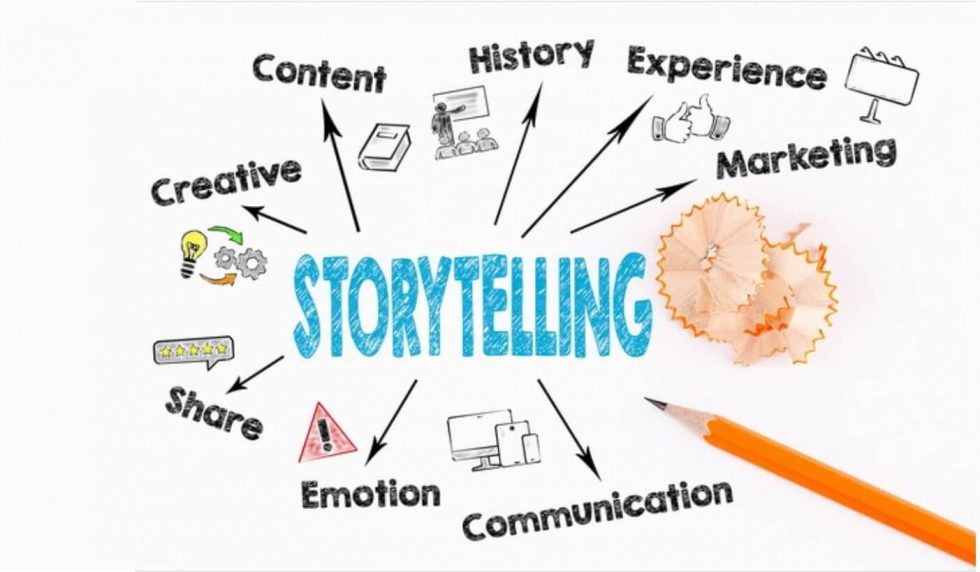The Role of Storytelling in Content Marketing

Introduction to Storytelling in Content Marketing
To expand our understanding of a narrative, storytelling is an effective marketing content strategy. It can help them delve into audience’s psyche by extending emotions to them. Stories are more effective in developing a brand image, share human experiences and inspire trust worth. In this article, the author discuss about how it works, how can be utilized in marketing campaigns, and how to implement it in your marketing approach.
The Role of Storytelling in Marketing
One of the tools that are currently inseparable from content marketing is storytelling that appeals to people’s heart. If stories are told imaginatively, they help in illustrating the content and capturing the audience’s attention. There are few things before which one does not want to turn away.
There are few things more to which one cannot help relating; there are few things which inspire a man against which he does not wish to turn his back, that one may become a customer of such a shop. In today’s information-overloaded world, stories make the companies unique and engage with clients on the various levels.
Why Storytelling is Essential in Engaging the Audience
Since people more often rely on them when it comes to the perception of information, stories are also an ideal means to cause people’s interest. Differential emotions are more easily broken into, compared to facts and figures or long statistics, which make the message much more personable.
By so doing, through storytelling, a brand manages to establish that connection with the customers thus building trust and encouraging interest in his products or services. Storytelling also maintains the audience engaged with the content because audiences spend more time on the sites that are most interesting to them as they lessen the bounce rate.
The Psychology Behind Storytelling and Consumer Behavior
The psychological processes regarding the consumption of the stories are also important in the consumers’ interaction with a particular story. It matters not whether this is true or not, but storytelling is signals our brain in a different manner as compared to facts do. Thereby, when people listen to a story, their brain produces dopamine – a substance in the brain that causes pleasure and motivates us.
This element creates the chemical that reminds the audience of the brand and makes them to act accordingly. Further, storytelling engages the person in the story and causes them to identify themselves in the story hence, changing behaviour and incite a feeling of ownership/inclusion.
Top Qualities That Makes a Good Story for Content Marketing
Therefore, the points under every component of study indicate that a compelling story has some elements that are capable of attracting the readers attention. Some of the most important aspects of the narrative that has to be followed include the organization of narrative components, the creation of an every-day-life central character, the presentation of the main conflict and the existence of the solve component.
It is important that the story reflects the image that is associated with the brand and, at the same time, the message should be quite captivating one for the users of the targeted brand. Enriching the story with emotion helps the audience become true fans because it creates the sense of true sender’s experience or brands’ message.
How to Use Storytelling to Build Brand Identity and Trust
It is key to build trust by actively communicating with the customers, directly or indirectly through other consumers or telling the story on the brand’s behalf. Telling and retelling related stories from the business’s archive can help to create a memorable image of the company in the minds of the consumers.
This is especially if the stories presented by the particular brands are real and close to life thus enhancing the reputation of the brands in the eyes of the customers. This has the long-term effect of transforming the occasional client to a loyal one who self-identifies as a patron of the brand.
What is the Storytelling Process for Achieving Great Marketing Objectives
This avoids coming up with stories that for instance promote sales of a particular product while in real sense they are doing more harm thus making the stories both interesting and useful. Campaign goals need to be defined clearly for one to know whether they are in the campaign with a view of making sales, creating awareness or just to let customers know a certain product exists.
In achieving these goals, it should be easy for the story to elaborate how the product or service is useful in solving a particular need. The greatest value of clear and goal-oriented story is the ability to improve the marketing message and to produce the desired result for the business.
Examples of Successful Storytelling in Content Marketing
Some of the successful campaigns have included the use of storytelling in branding to improve content marketing. For instance, Nike shares the athletes’ stories involving some moments of struggle, and by so doing, it links itself with themes such as triumph and persistence.
Also, the marketing of Apple majorly depicts; stories of innovation and creativity, which are embraced by target consumers. These brands know there is power in story telling since it involves and persuades the audience, thus creating an impression.
Storytelling Strategies for Different Content Formats
Newspapers and newspapers use different ways of storytelling because they have different customs and types of content. In the case of blog posts, the story could be an anecdotal or an account of a particular scenario. Because the social media platform is informal, stories should be written in fewer words and mostly illustrated by pictures or clips.
In the case of email marketing, one can implement storytelling through customer stories or insight into the company’s story. Knowledge of such a format makes it easier to ensure that the narration is done in a friendly way that will allow the audience to enjoy the story whenever they come across it.
The Impact of Storytelling on SEO and Online Visibility
Hence, storytelling not only does a good job at capturing the audience but enhances SEO and such factors that keep a website active on the internet. Newspapers prefer content that temporality occupies the readers as much time as possible and stories are likely to do this.
This increases dwell time, which of course is likely to have an impact on the search results rankings. Furthermore, new and interesting, eye-opening stories related to the brand can and should be posted on social accounts, and such posts also result in the traffic to the website, thus helping to raise the SEO rank and allowing the brand to reach as many people as possible.
Evaluating the performance of the Storytelling in the context of Content Marketing
In order to evaluate the effectiveness of storytelling in content marketing, several indicators need to be taken into account alongside each other. These could be engagement rate, number of shares, time spent by the viewers on the particular page, and conversion rate.
When these metrics are evaluated, the marketers are able to know if the story has a positive outcome with the intended audience and if the set objectives for the campaign were achieved. Customers’ feedback whether in the form of comment or review could also be useful in indicating the efficacy of storytelling strategy.
Conclusion
Integrating story into the content marketing technique is a tested approach that is useful in reaching target consumers, improving branding, and increasing marketing efficiency. Thus, using the elements of narrative surrounding relevant stories, interesting and engaging stories and the aim-focused-based approach, the brands provide attention and a willingness to create a positive attitude and loyalty in the long-term.
Currently, possible forms of storytelling include blogs, social media, Email marketing how storytelling can reinvent how a brand engages the target market and satisfies the necessary business goals.






